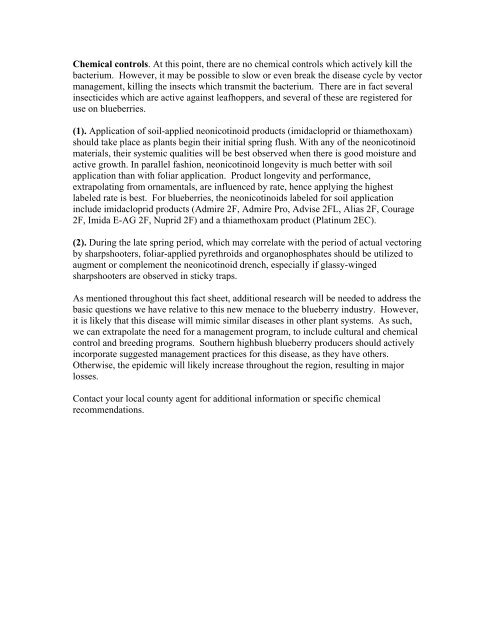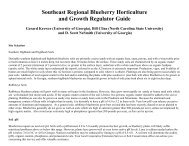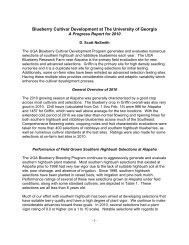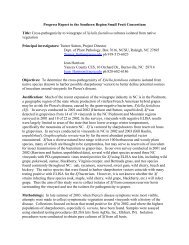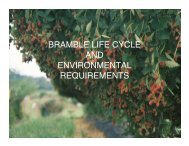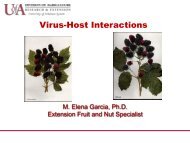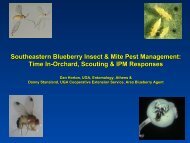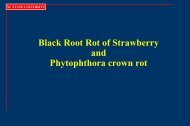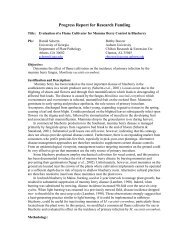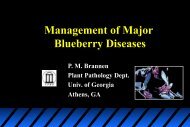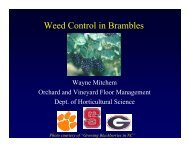Bacterial Leaf Scorch of Blueberry - The Southern Region Small ...
Bacterial Leaf Scorch of Blueberry - The Southern Region Small ...
Bacterial Leaf Scorch of Blueberry - The Southern Region Small ...
You also want an ePaper? Increase the reach of your titles
YUMPU automatically turns print PDFs into web optimized ePapers that Google loves.
Chemical controls. At this point, there are no chemical controls which actively kill thebacterium. However, it may be possible to slow or even break the disease cycle by vectormanagement, killing the insects which transmit the bacterium. <strong>The</strong>re are in fact severalinsecticides which are active against leafhoppers, and several <strong>of</strong> these are registered foruse on blueberries.(1). Application <strong>of</strong> soil-applied neonicotinoid products (imidacloprid or thiamethoxam)should take place as plants begin their initial spring flush. With any <strong>of</strong> the neonicotinoidmaterials, their systemic qualities will be best observed when there is good moisture andactive growth. In parallel fashion, neonicotinoid longevity is much better with soilapplication than with foliar application. Product longevity and performance,extrapolating from ornamentals, are influenced by rate, hence applying the highestlabeled rate is best. For blueberries, the neonicotinoids labeled for soil applicationinclude imidacloprid products (Admire 2F, Admire Pro, Advise 2FL, Alias 2F, Courage2F, Imida E-AG 2F, Nuprid 2F) and a thiamethoxam product (Platinum 2EC).(2). During the late spring period, which may correlate with the period <strong>of</strong> actual vectoringby sharpshooters, foliar-applied pyrethroids and organophosphates should be utilized toaugment or complement the neonicotinoid drench, especially if glassy-wingedsharpshooters are observed in sticky traps.As mentioned throughout this fact sheet, additional research will be needed to address thebasic questions we have relative to this new menace to the blueberry industry. However,it is likely that this disease will mimic similar diseases in other plant systems. As such,we can extrapolate the need for a management program, to include cultural and chemicalcontrol and breeding programs. <strong>Southern</strong> highbush blueberry producers should activelyincorporate suggested management practices for this disease, as they have others.Otherwise, the epidemic will likely increase throughout the region, resulting in majorlosses.Contact your local county agent for additional information or specific chemicalrecommendations.


